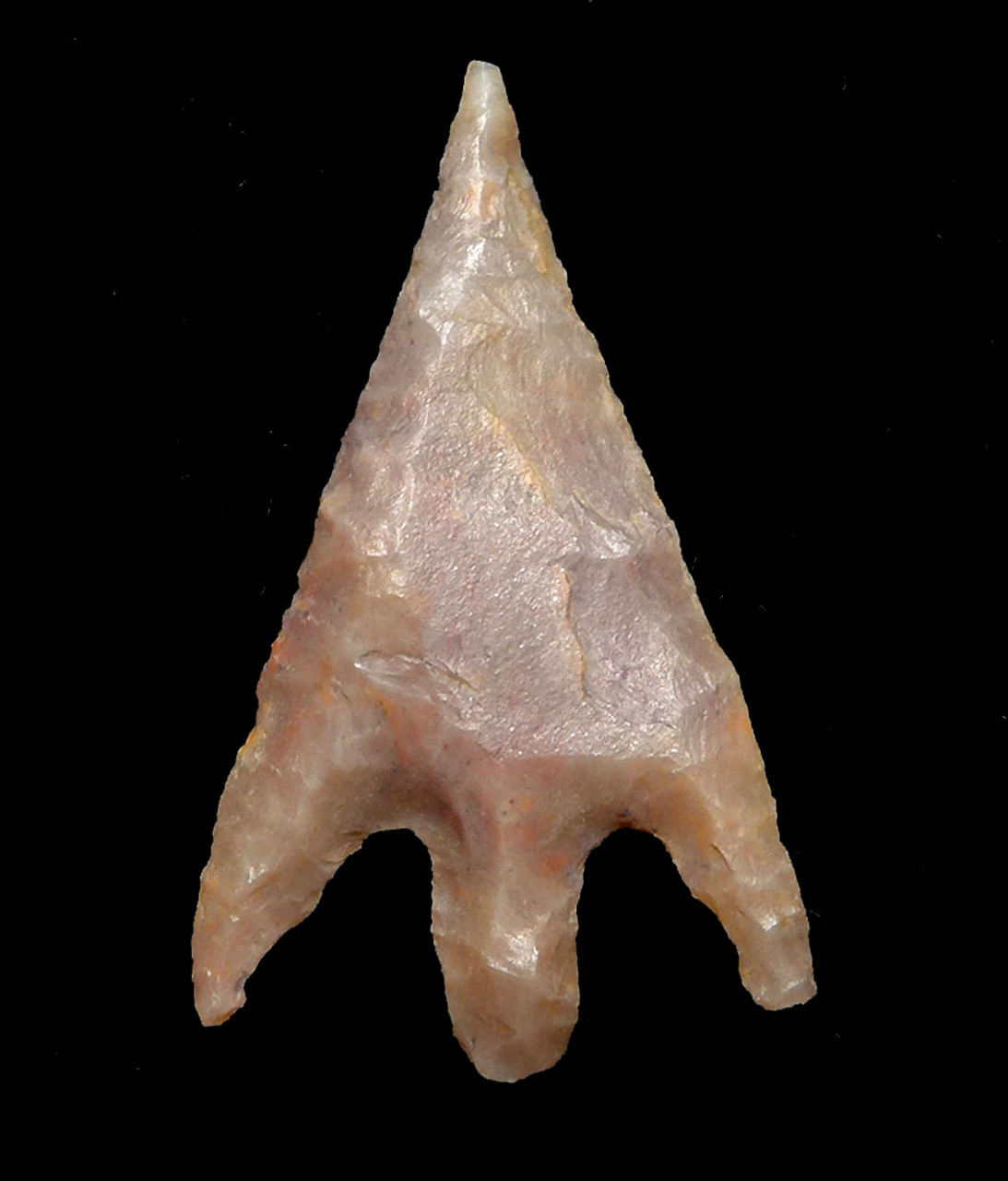Product Description
SEE MORE AFRICAN NEOLITHIC ARROWHEADS
This CAPSIAN NEOLITHIC arrowhead was found on an exposed African Neolithic site in the Sahara Desert in Northwest Africa. It was expertly made by Neolithic humans and dates from 8000 B.C. - 2700 B.C.. This projectile point was hand-selected based on premium features and condition, from thousands of inferior quality specimens. It is exceptional and complete with rare, delicate and unbroken features such as a needle-sharp tip, barbs and a perfect, unbroken tang. Very seldom, do arrowheads of this type, survive undamaged as this one has. In over the last two decades, poor safety and security in the desert, as well as changing laws in North Africa, prevent any new collecting or discoveries to be made, making these artifacts increasingly desirable and valuable.
Superb patina and wind sheen can be seen from long-term desert exposure. A top grade collector example that far exceeds the bucket loads of common arrowheads often found and offered for sale. Original mineral deposits and patina are intact and deep in the flake hinge fractures and micro-crevices - traits ONLY found in AUTHENTIC specimens. Exercise caution and stick to established, knowledgeable sellers when it comes to stone tools from Africa as many fakes are in the market and have been for years!
HISTORY
CAPSIAN NEOLITHIC arrowheads have been found on exposed Neolithic sites in the Sahara Desert in Northwest Africa for decades. They were made by Neolithic humans (Homo sapiens sapiens) between 10,000 and 4,700 years ago. Projectile points from this period and region vary from large examples probably used as spearheads, down to tiny, flaked specimens that defy explanation as to how they were made or why.
These arrowheads are similar to African Neolithic projectile points known to have been used in human conflict. A late Pleistocene graveyard was discovered at Jebel Sahaba, north of Wadi Halfa in Sudanese Nubia. These burials date from 14,000 to 12,000 years ago. Many people were buried there that had fallen victim to violent deaths with the bodies having been killed by microlithic weapons and small arrowhead projectiles. One man had 110 artifacts associated with his skeleton which had entered his body as stone barbs and points of projectiles. Two of the projectiles were still embedded in his skull.
 US DOLLAR
US DOLLAR
 EURO
EURO
 AUSTRALIAN DOLLAR
AUSTRALIAN DOLLAR
 CANADIAN DOLLAR
CANADIAN DOLLAR
 POUND STERLING
POUND STERLING








